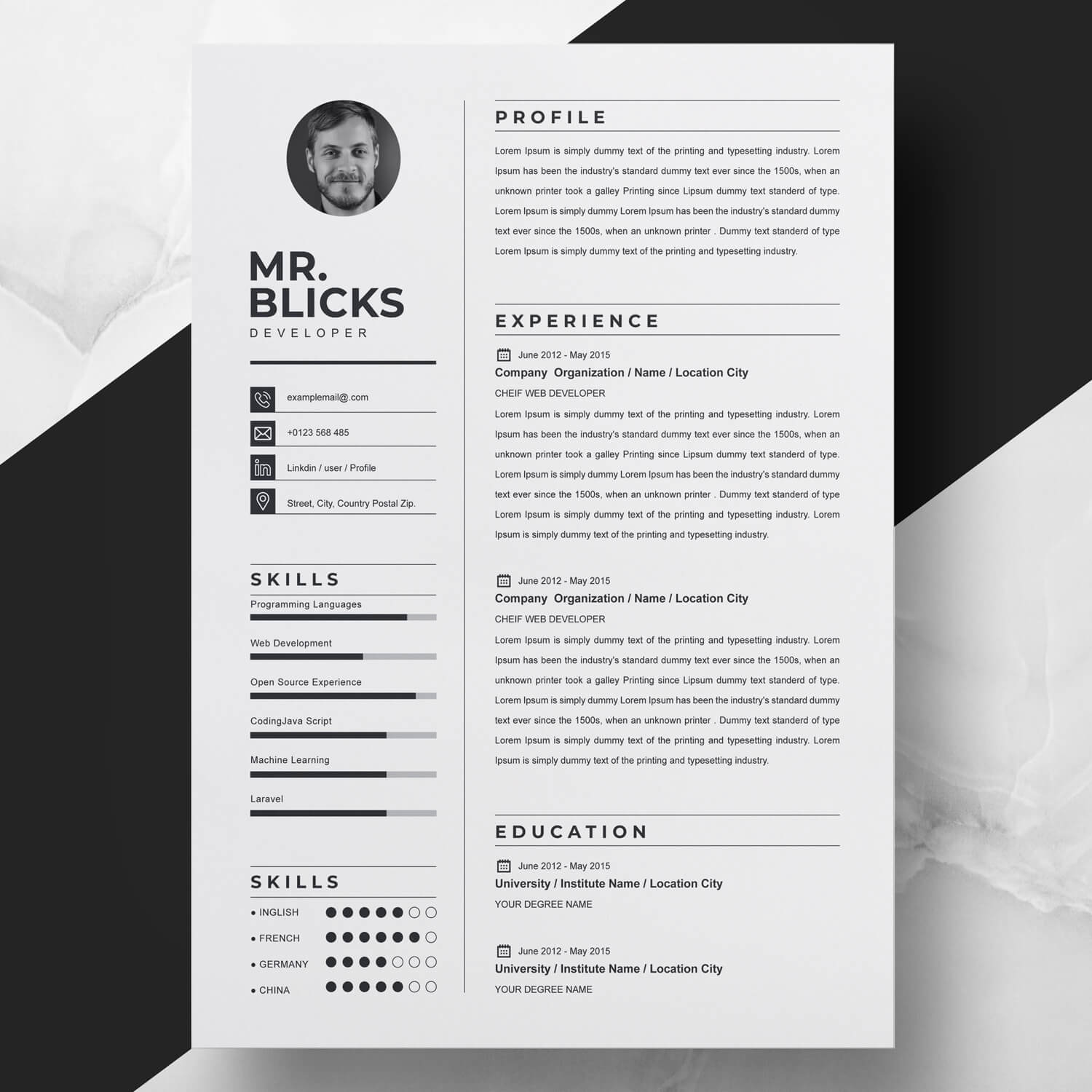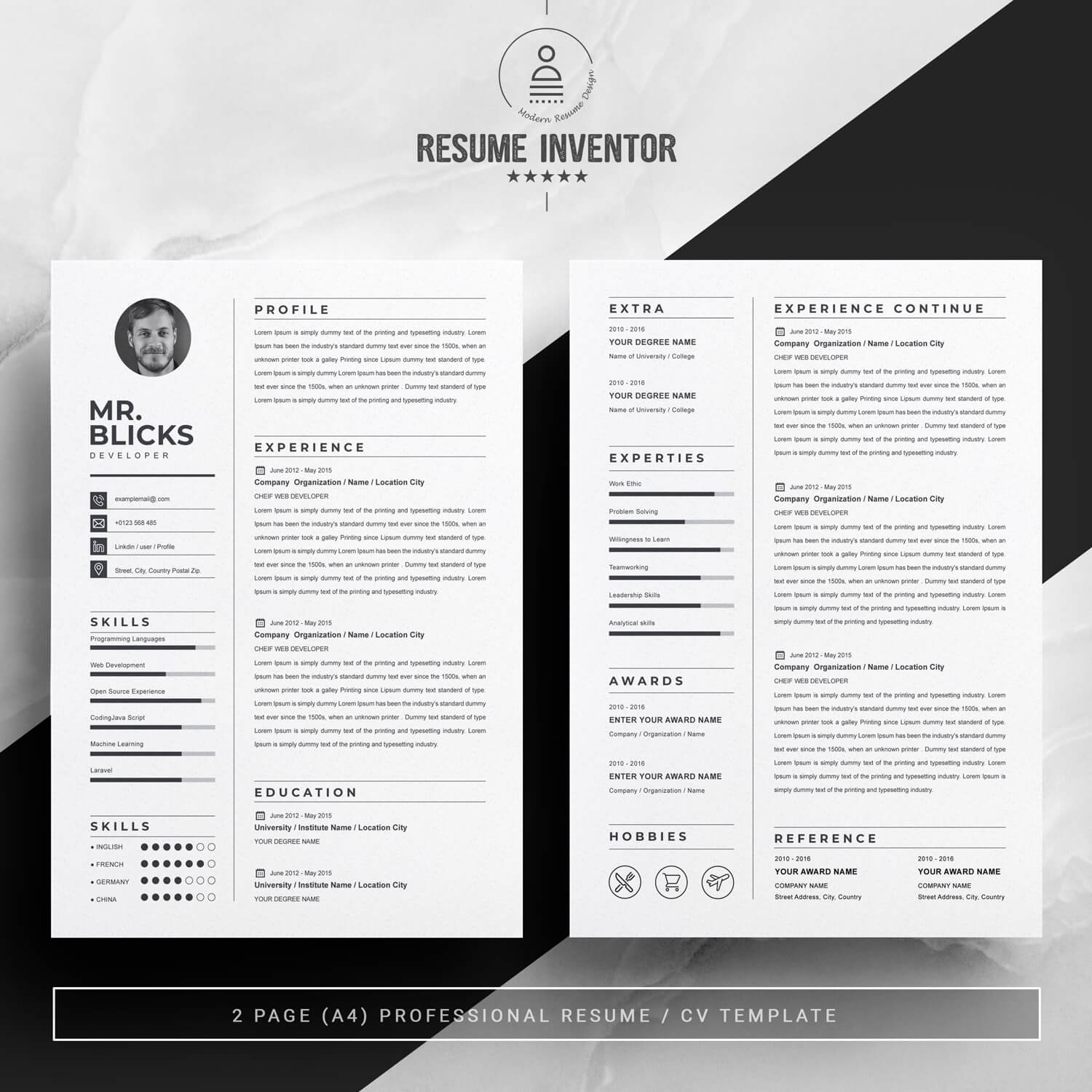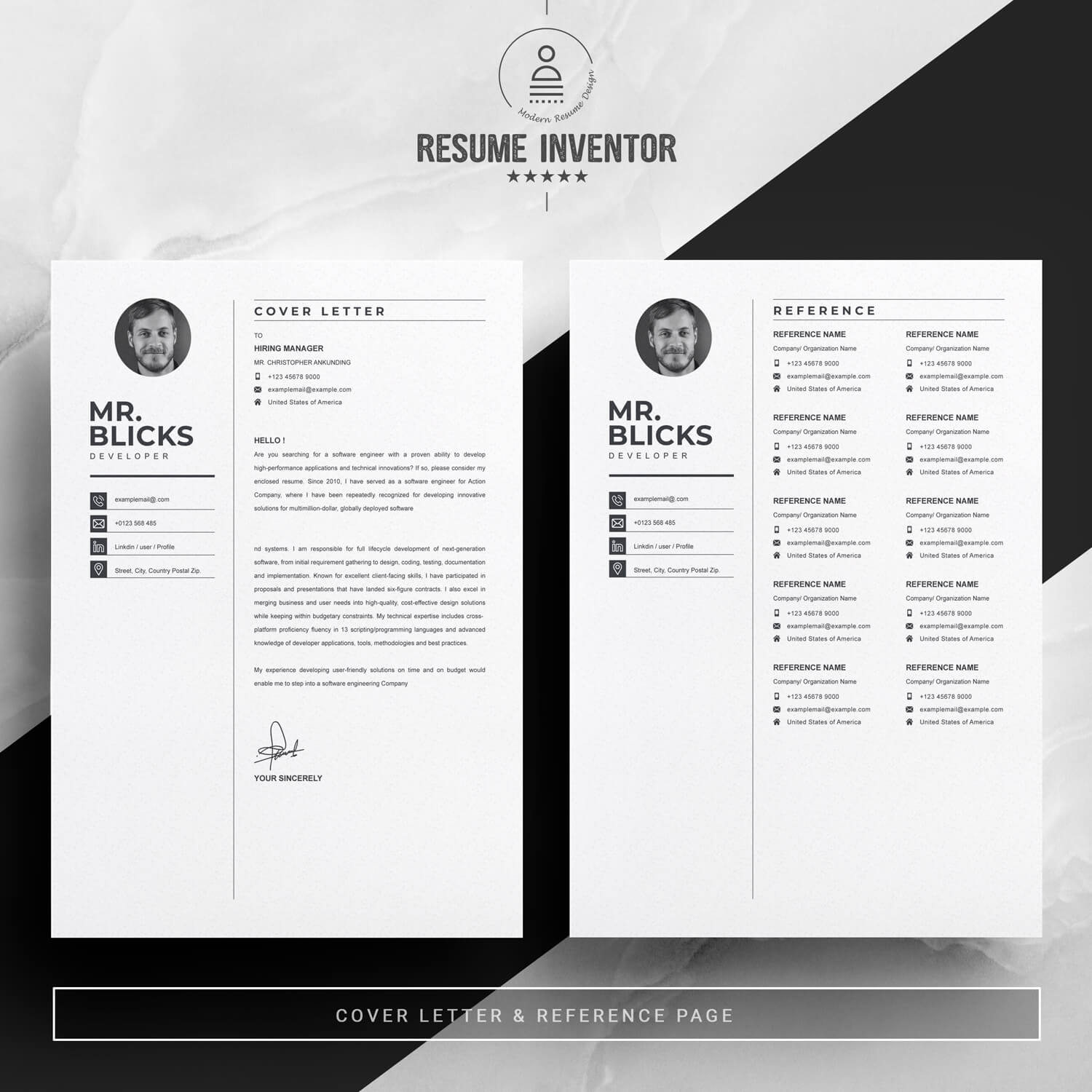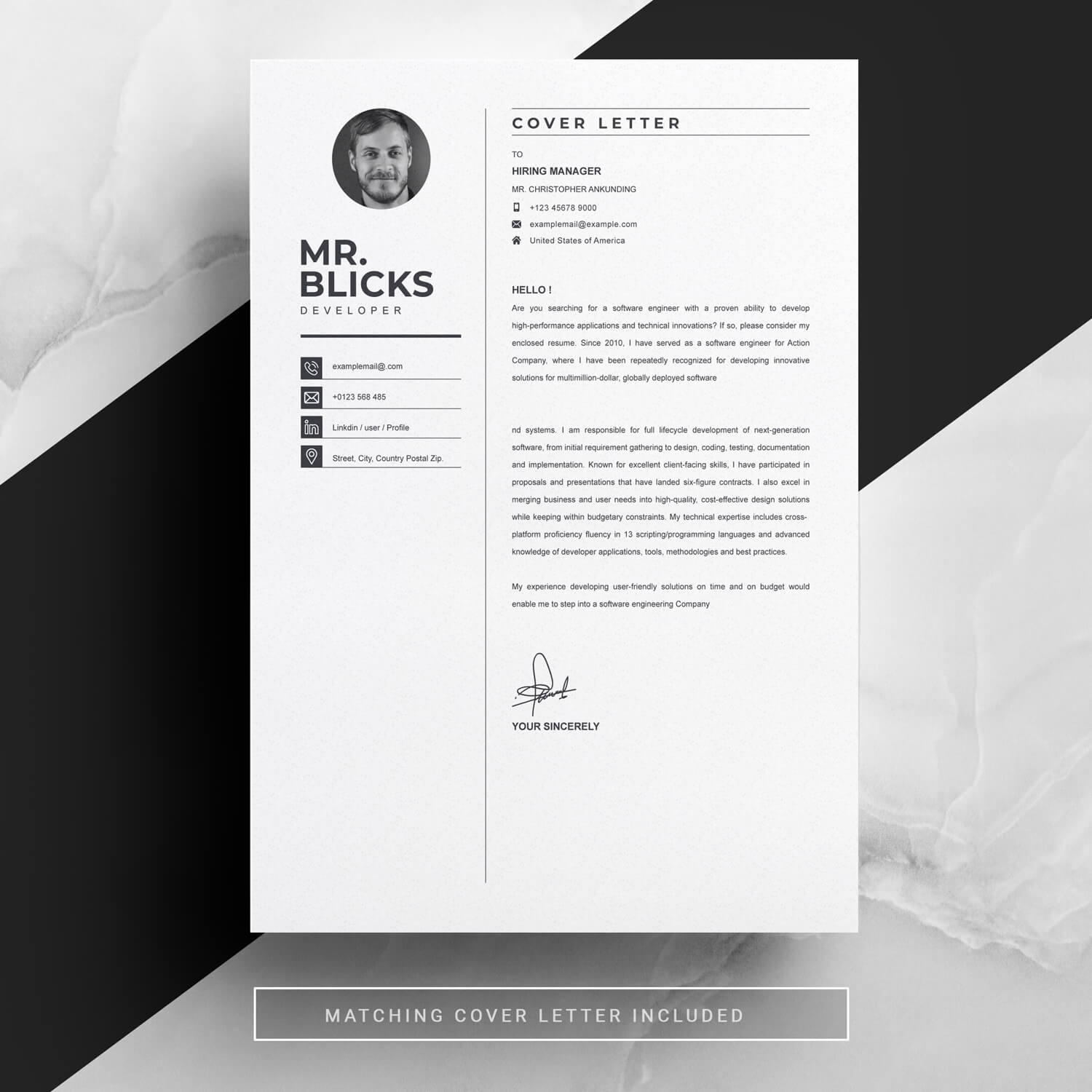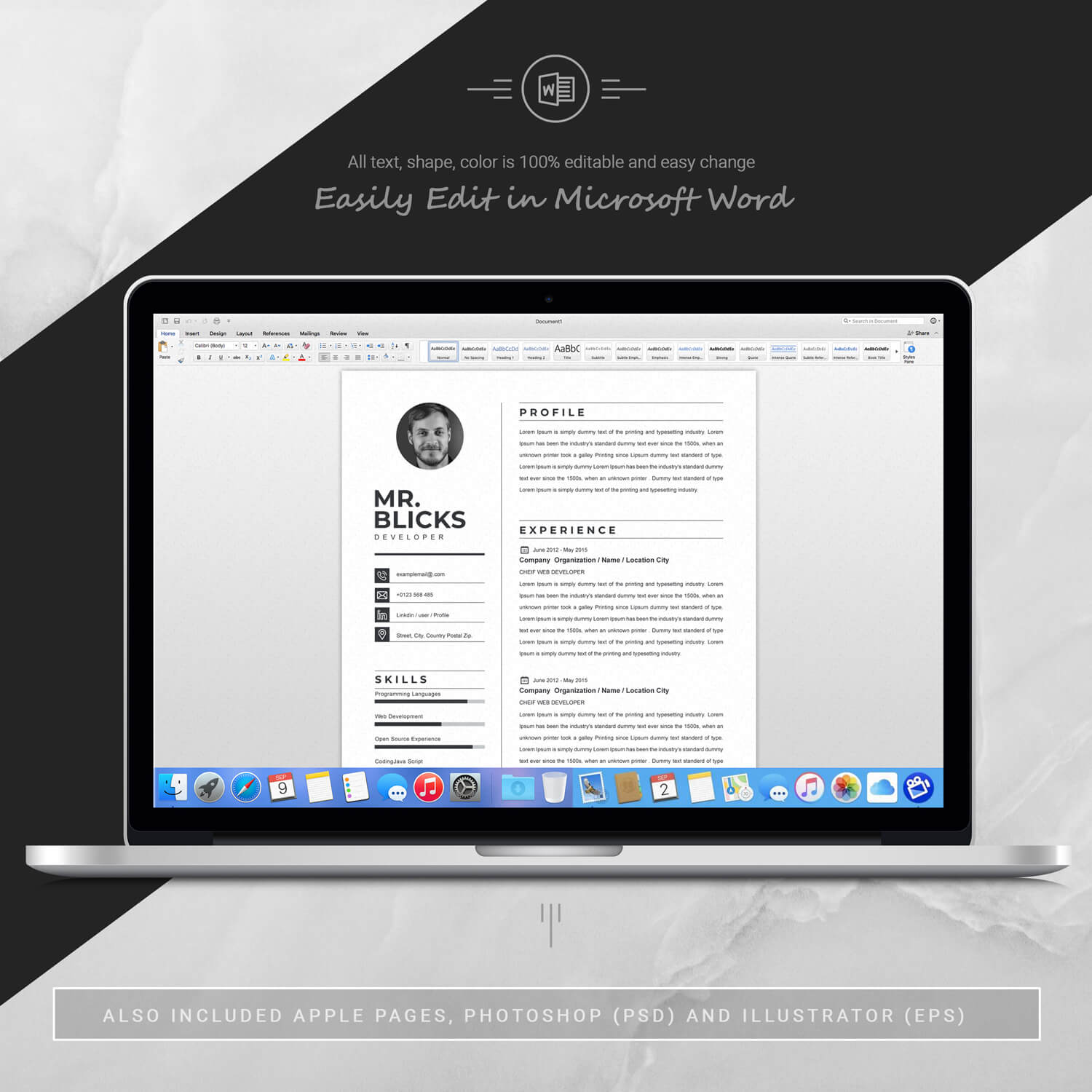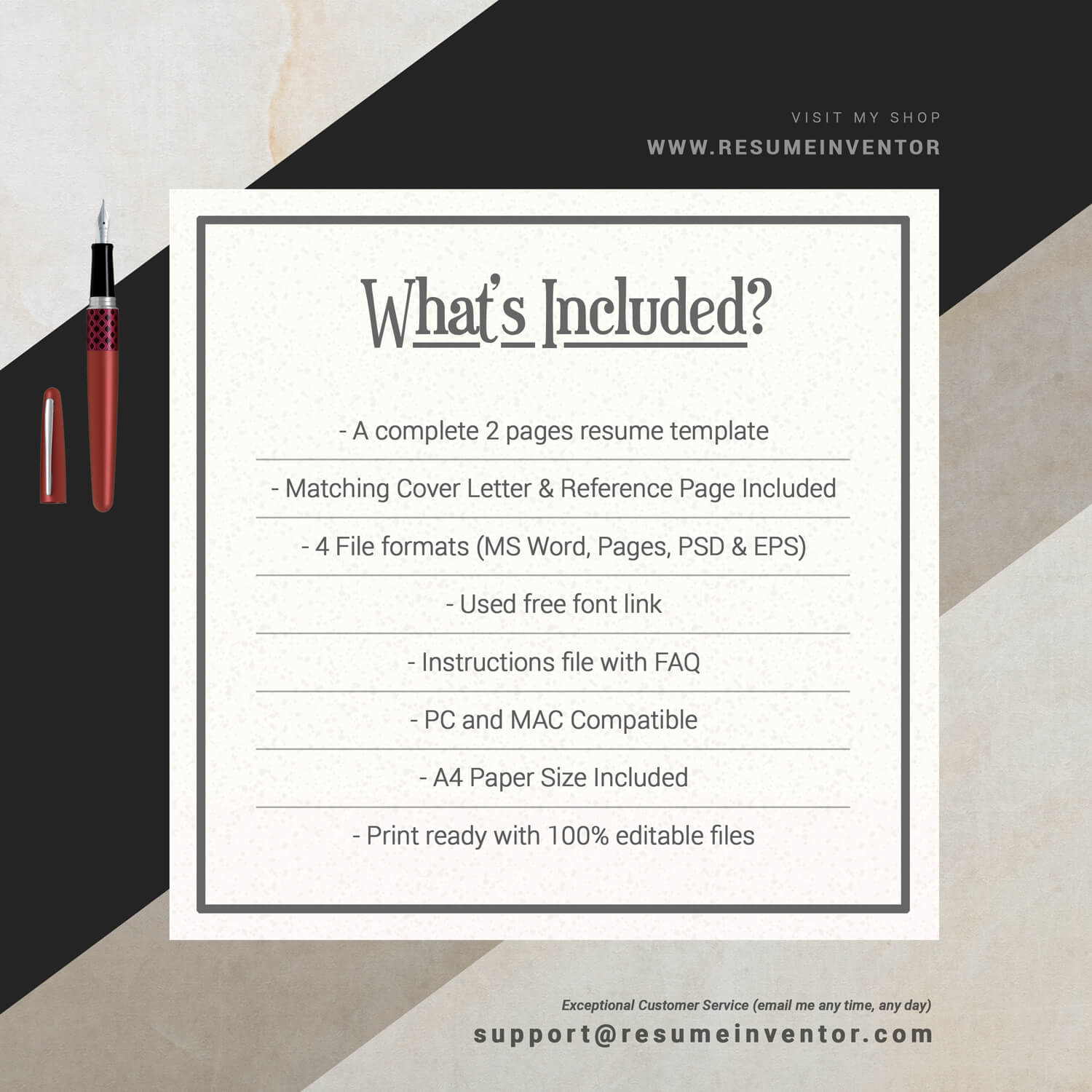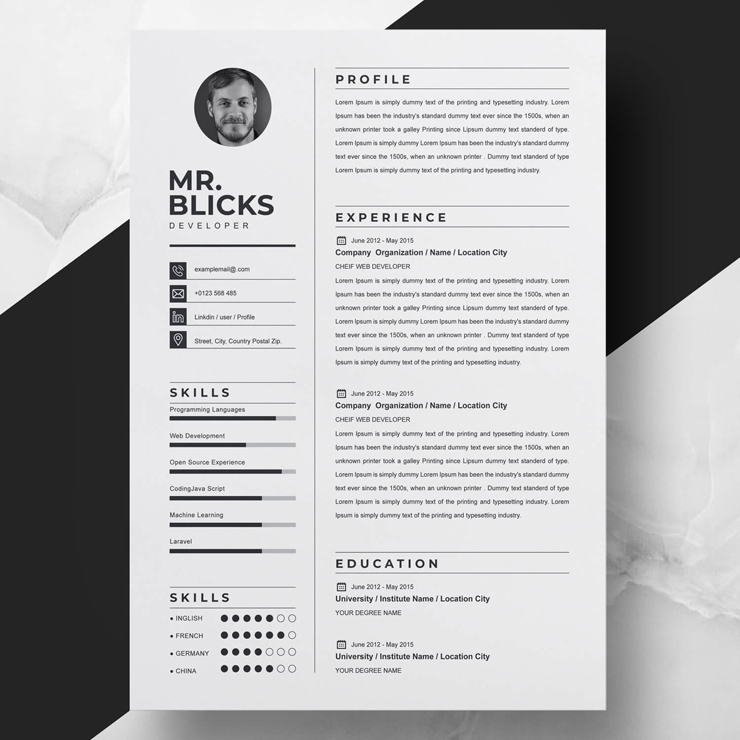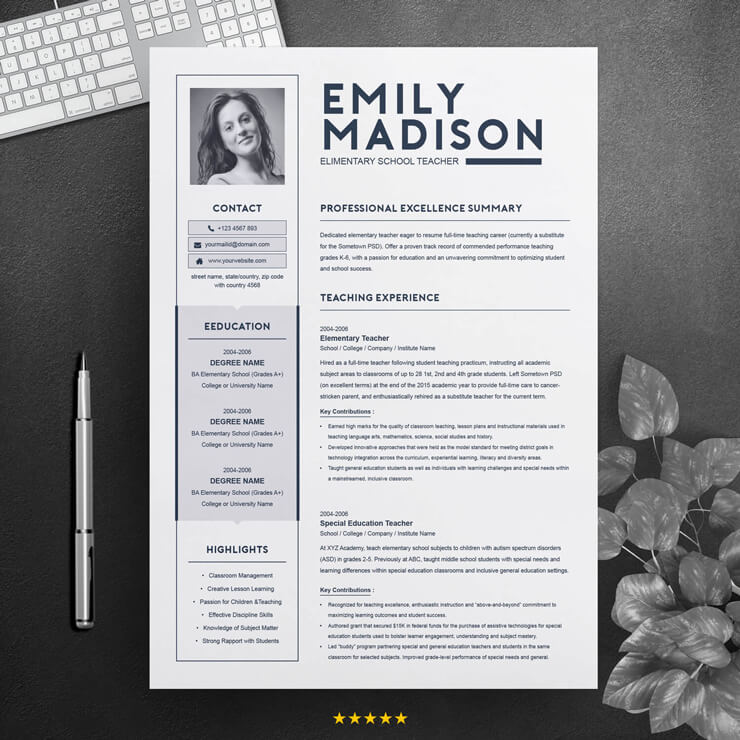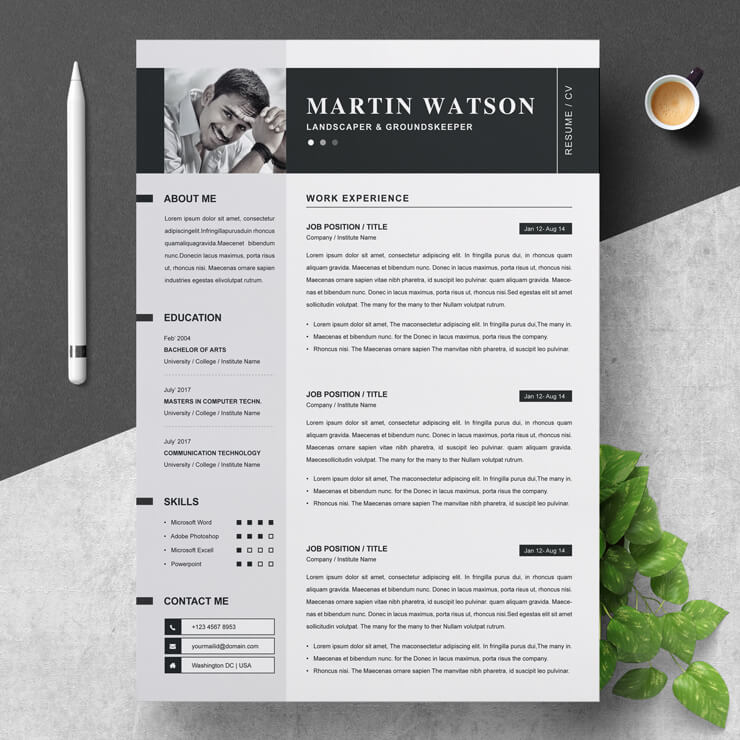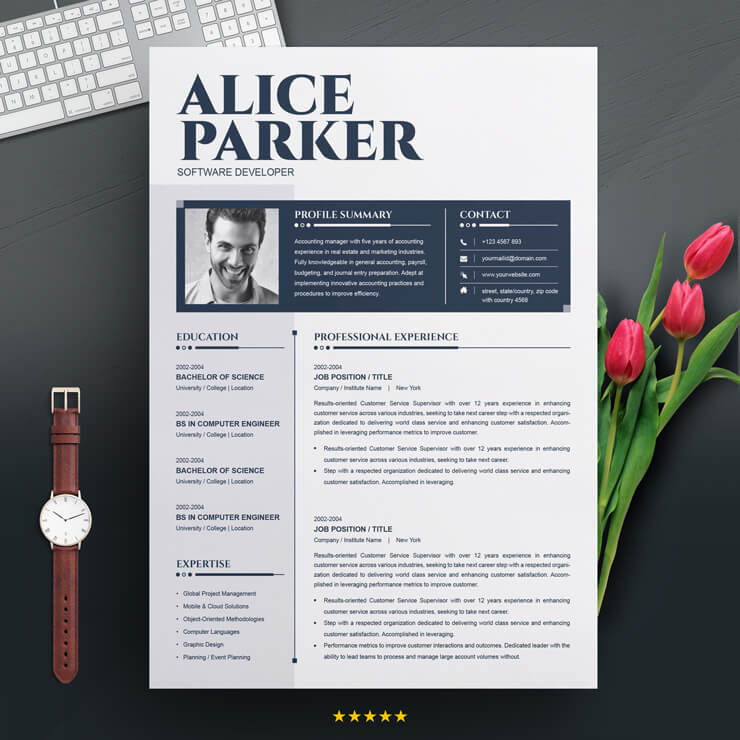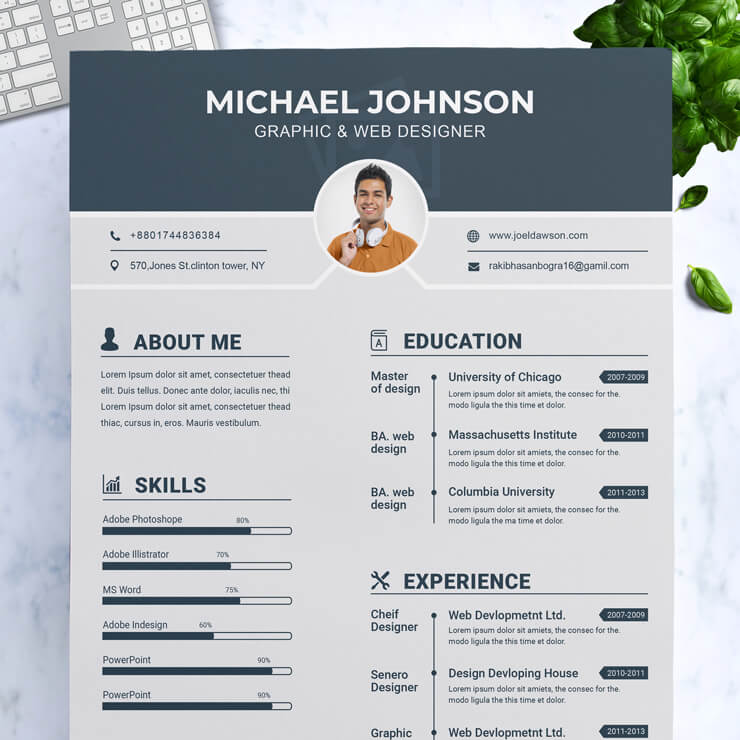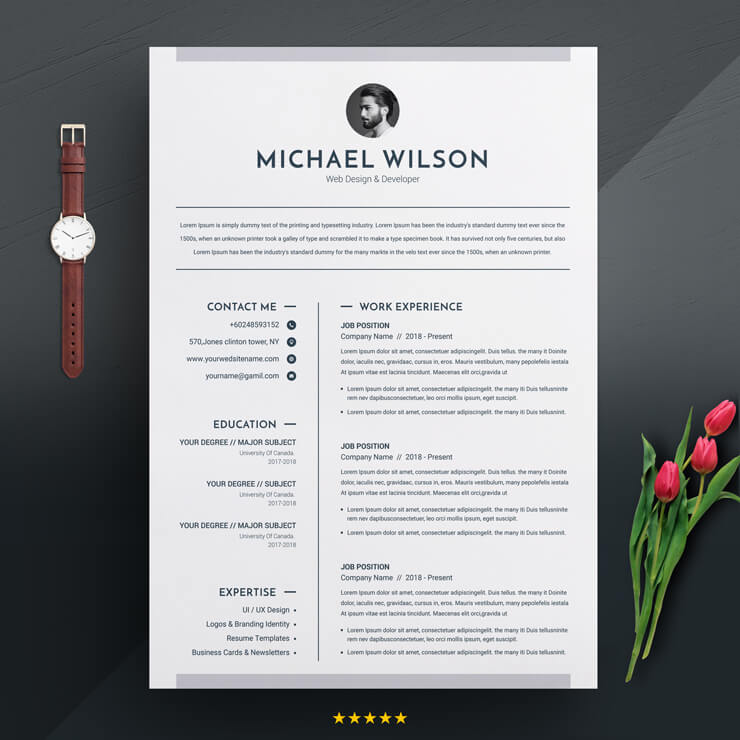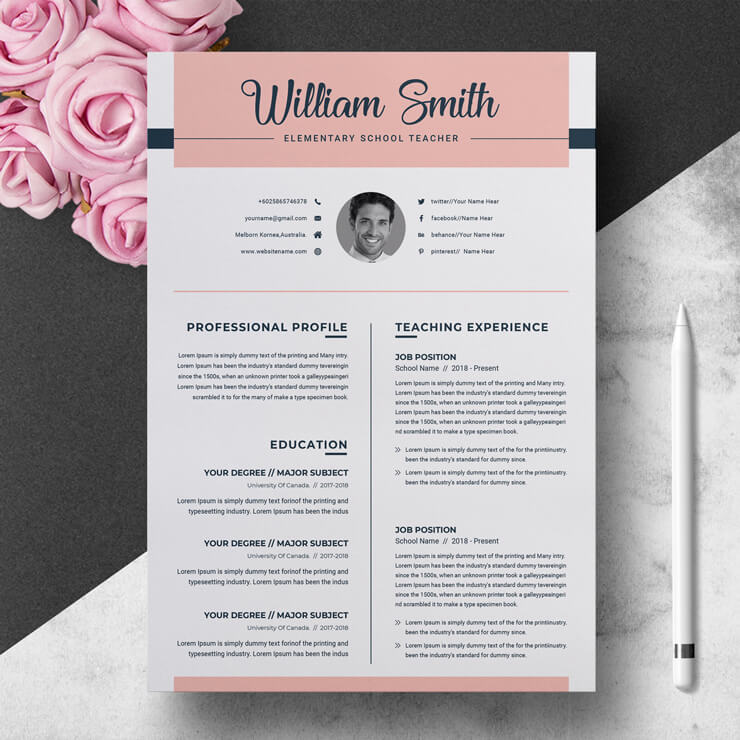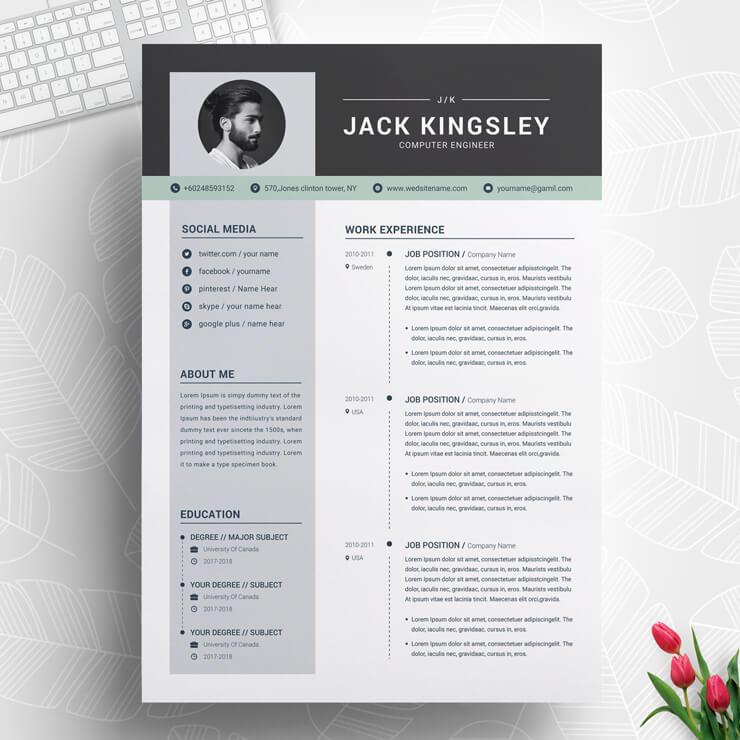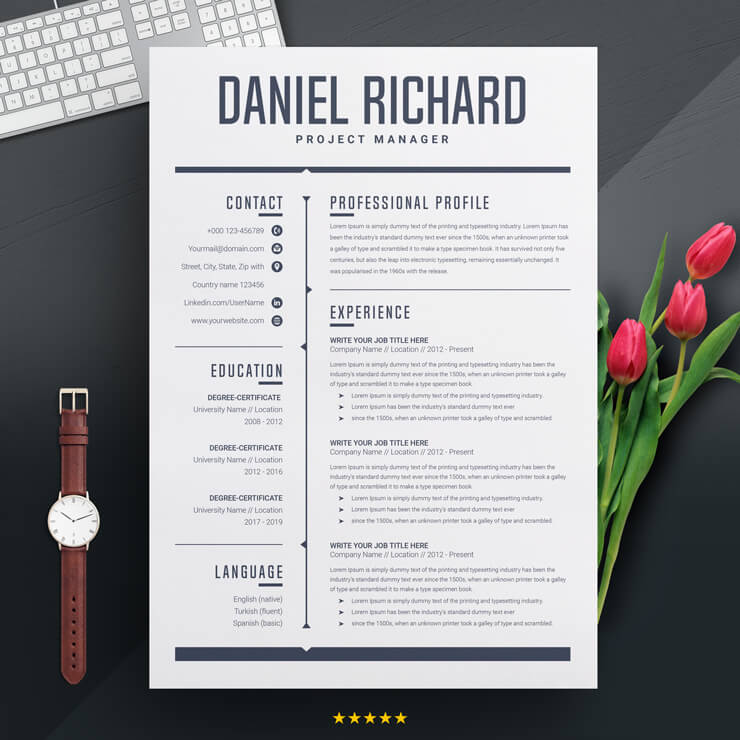Java Backend Developer Resume Template with Cover Letter & Writing Tips
Boost your chances with our premium Java Backend Developer Resume Template! Tailored specifically for Java Backend Developers, it showcases your skills, experience, and achievements in a professional format. Stand out from the competition with a matching cover letter that complements your resume. Our expertly crafted template highlights essential sections and provides valuable writing tips to create a captivating and tailored resume. Increase your job prospects and secure that dream role in Java Backend Development with our comprehensive and eye-catching resume package. Elevate your career today!
What is a Java Backend Developer?
A Java backend developer is a type of back-end developer who specializes in using the Java programming language to build applications. Back-end development means working on server-side software, which focuses on everything you can’t see on a website. Back-end developers ensure the website performs correctly, focusing on databases, back-end logic, application programming interfaces (APIs), architecture, and servers.
What Does a Java Backend Developer Do?
A Java backend developer is responsible for designing, developing, and maintaining the server-side components of web applications and software systems using the Java programming language. Here’s a detailed breakdown of what a Java backend developer does:
- Server-side Development: They write code to handle incoming client requests (e.g., web browsers, mobile apps) and generate appropriate responses. This involves creating endpoints and routes that define the API (Application Programming Interface) for the frontend to interact with.
- Business Logic Implementation: They implement the core functionality and rules of the application. This involves coding the algorithms and logical operations that drive the application’s behavior, ensuring it operates correctly and efficiently.
- Database Interaction: Java backend developers work with databases to manage data storage and retrieval. They use technologies like JDBC (Java Database Connectivity) or JPA (Java Persistence API) to interact with databases such as MySQL, PostgreSQL, Oracle, or MongoDB.
- APIs and Web Services: They create and maintain APIs, allowing different software systems to communicate. These APIs enable seamless integration between various application components or external services.
- Security Implementation: Backend developers handle security aspects such as user authentication, data encryption, and protection against common vulnerabilities like SQL injection or cross-site scripting (XSS) attacks.
- Performance Optimization: They identify and resolve performance bottlenecks in the backend code to ensure the application runs efficiently and can handle many concurrent users.
- Integration with Third-party Services: Java backend developers integrate the application with external services and APIs. For example, they might integrate payment gateways, social media platforms, or cloud services.
- Testing and Debugging: They write unit tests to verify the correctness of their code and conduct thorough testing to identify and fix any bugs or issues in the backend functionality.
- Deployment and Maintenance: Backend developers deploy the application to production servers and handle ongoing maintenance tasks. They ensure the application runs smoothly in a live environment and may be involved in updates and bug fixes.
- Collaboration: Java backend developers often collaborate with frontend developers, UI/UX designers, and other development team members to ensure seamless integration between the frontend and backend components.
Java Backend Developer Resume Writing Tips and Examples
Creating a resume for a Java Backend Developer involves highlighting your relevant skills, work experience, education, and any notable achievements. Follow these steps to craft a compelling resume:
Choosing the Best Resume Format for a Java Backend Developer
Choosing the right resume format is essential to presenting your qualifications effectively. The two most common resume formats are the chronological and functional formats, and for technical roles like Java Backend Developer, the combination/hybrid format can also be a strong choice. Let’s go through each option:
Chronological Resume Format: This format focuses on your work history in reverse chronological order, first highlighting your most recent experiences. Having a solid and continuous work history with relevant positions is suitable.
Sections in a chronological resume for a Java Backend Developer:
- Contact Information
- Resume Summary/Objective (optional but can be helpful)
- Work Experience (start with your most recent position and list previous roles in reverse order)
- Skills (specific to Java Backend Development and any other relevant technical skills)
- Education
- Certifications (if any)
Functional Resume Format: The functional resume emphasizes your skills and accomplishments rather than your chronological work history. This format is helpful to highlight specific skills relevant to Java Backend Development and downplay employment gaps or irrelevant roles.
Sections in a functional resume for a Java Backend Developer:
- Contact Information
- Resume Summary/Objective
- Skills Summary (focus on technical skills like Java, Backend Development, databases, etc.)
- Accomplishments/Achievements (specific to your Java Backend projects)
- Work Experience (briefly mention the companies and job titles without going into too much detail)
- Education
- Certifications (if any)
Combination/Hybrid Resume Format: As the name suggests, this format combines the best elements of both the chronological and functional formats. It allows you to showcase your skills upfront while also presenting your work history in reverse chronological order.
Sections in a combination/hybrid resume for a Java Backend Developer:
- Contact Information
- Resume Summary/Objective
- Skills Summary (specific to Java Backend Development and other relevant technical skills)
- Work Experience (focus on accomplishments and specific projects while still maintaining a reverse chronological order)
- Education
- Certifications (if any)
Create a Professional Java Backend Developer Resume Header
A professional Java Backend developer’s resume header should include the following information:
- Full name: Your full name should be the first thing that appears on your resume header. Use a larger font size for the rest of the text to make it stand out.
- Contact information: Your contact information should include your phone number, email address, and location. Make sure that this information is up-to-date and professional.
Here is an example of a professional Java Backend developer’s resume header:
-
- John Doe
- 123 Main Street
- Anytown, USA 12345
- (123) 456-7890
- johndoe@email.com
Write a Java Backend Developer Resume Summary
When writing a Java Backend Developer resume summary, consider the following tips:
- Keep it concise: Your resume summary should be brief, typically consisting of 2-4 sentences. It should provide a quick overview of your experience and qualifications.
- Highlight your achievements: Focus on your key accomplishments and past roles relevant to the Java Backend Developer position. Mention specific projects, technologies, or frameworks you have worked with.
- Tailor it to the job description: Customize your resume summary to align with the job requirements you are applying for. Highlight most relevent skills and experience.
- Emphasize your technical skills: As a Java Backend Developer, your technical skills are crucial. Mention the programming languages, frameworks, and tools you are proficient in, such as Java, Spring, Hibernate, and database management systems.
- Show your career progression: If you have been promoted or have shown career progression in previous roles, mention it in your resume summary. This demonstrates your dedication and growth as a developer.
Here is an example of a Java Backend developer’s resume summary:
“Experienced Java Backend Developer with 5+ years of experience in developing server-side code, managing databases, building APIs, implementing security measures, and optimizing performance. Skilled in Java, Spring, Hibernate, Struts, and Play. Proven ability to deliver high-quality software on time and on budget. Looking for a challenging role as a Java Backend Developer at XYZ Company.”
Highlight Your Java Backend Developer Skills
As a Java Backend Developer, you should have a good understanding of programming languages, frameworks, and tools. Here are some skills that you can highlight on your resume:
- Core Java: Core Java (SE) Mastery is essential for a Java Backend Developer. You should know aspects of core Java, including arrays, operators, loops, and more.
- Object-oriented programming: A deep understanding of object-oriented programming is expected for Senior Java Backend Developers.
- Spring Framework: Experience with the Spring Framework is essential for building robust and scalable applications.
- RESTful web services: Building and implementing RESTful web services is a crucial skill for Java Backend Developers.
- Database design and administration: Backend Developers are responsible for designing and managing databases. You should have experience with database design and administration.
- Continuous integration and delivery: Experience with continuous integration and delivery tools such as Maven and Jenkins is important for building and deploying applications.
- Troubleshooting and debugging: Backend Developers should have experience troubleshooting and debugging applications to identify and resolve issues.
- Performance optimization: Experience with performance optimization is important for improving the speed and scalability of applications.
- Project management: Java Backend Developers should have experience with project management, including time management and technical analysis.
Add Your Work Experience to the Java Backend Developer Resume
When highlighting your work experience as a Java Backend Developer on your resume, consider the following tips:
- Start with your most recent experience: Begin with your current or most recent position as a Java Backend Developer and work your way back chronologically. This helps recruiters understand your most recent responsibilities and achievements.
- Focus on relevant responsibilities: Highlight the key responsibilities and tasks you performed in each role that are directly related to Java backend development. This could include writing, testing, and debugging Java code, designing and developing RESTful web services, integrating front-end web pages with backend coding, and optimizing Java application performance.
- Quantify your achievements: Quantify your successes to demonstrate your impact. For example, mention how you improved application performance by a certain percentage or reduced response time for a specific feature.
- Showcase your technical skills: In each work experience entry, mention the specific technologies, frameworks, and tools you utilized. This could include Java, Spring Framework, Hibernate, messaging architectures like Apache Kafka or RabbitMQ, and MySQL, Oracle, or MongoDB databases.
- Highlight collaboration and teamwork: As a Java Backend Developer, you likely worked closely with cross-functional teams, including front-end developers, product managers, and testers. Emphasize your ability to collaborate effectively and communicate technical concepts to non-technical stakeholders.
- Show career progression: If you have shown career progression or received promotions in your previous roles, highlight this in your work experience section. It demonstrates your growth and dedication as a developer.
Example:
Java Backend Developer
ABC Company | City, State | Dates
-
- Developed and maintained server-side code using Java, Spring Framework, and Hibernate.
- Designed and implemented RESTful web services to enable seamless communication between the server and client side of applications.
- Collaborated with front-end developers to integrate user interfaces with backend coding, ensuring a smooth user experience.
- Optimized Java application performance, scalability, and stability through code refactoring and performance tuning techniques.
- Investigated and resolved complex technical issues, providing recommendations and solutions to improve application functionality.
- Mentored and assisted junior developers with coding best practices and design patterns.
- Participated in code reviews to ensure the code’s quality and that it met coding standards.
Add Your Education Sector to the Java Backend Developer Resume
When writing a Java Backend Developer resume, it is important to include your education sector. Here are some tips and examples to help you:
- Education: Include your educational background, starting with your most recent degree. List the institution’s name, the degree you earned, and the graduation date. If you have a high GPA or any academic achievements, you can also include them.
Example: Bachelor of Science in CSE, ABC University, Jan 2023
- Certifications: If you have any relevant certifications, such as Oracle Certified Professional, Java SE 11 Developer, or AWS Certified Developer – Associate, include them in a separate section.
Example: Oracle Certified Professional, Java SE 11 Developer, 2022
- Courses and Training: If you have taken any relevant courses or training programs, you can also include them.
Example: Coursera: Java Programming and Software Engineering Fundamentals, 2021
Add Other Sections to Your Java Backend Developer Resume
When creating a Java Backend Developer resume, it is important to include additional sections beyond just work experience. Here are some sections that can be added to a Java Backend Developer resume:
Language Skills
- List any languages that you are proficient in, especially if they are relevant to the job you are applying for. For example, if you are applying for a job that requires working with clients in a Spanish-speaking country, list your proficiency in Spanish.
Achievements and Awards
- Highlight any notable achievements or awards that you have received in your career. For example, if you developed a high-performance Java backend application that reduced response time by 50%, mention that in your resume.
Volunteer Work
- If you have volunteered your time to work on any relevant projects, list them in this section. This can show that you are passionate about your work and willing to contribute to the community.
Interests
- Including a section about your interests can help you stand out from other candidates and show that you are well-rounded. Be sure to list interests relevant to the job or demonstrate skills valuable in the workplace.
Java Backend Developer Cover Letter Writing Tips
Here are some writing tips for a Java Backend Developer cover letter:
- Research the company and the job description: Research the company and position before writing your cover letter. This way help you to customize your cover letter to the company’s needs.
- Highlight relevant skills and experience: Highlight your relevant skills and experience as a Java Backend Developer. This could include experience with Java, RESTful APIs, database management systems, cloud platforms, version control systems, and problem-solving skills.
- Use a professional tone: Write a professional cover letter and avoid slang. Proofread it for mistakes to make it effective.
- Be concise and to the point: Your cover letter should be concise and to the point, highlighting your key qualifications and experiences. Avoid repeating information that is already included in your resume.
- Show enthusiasm and passion: Finally, show enthusiasm and passion for the position and the company. This will help you stand out from other candidates and show that you are genuinely interested in the opportunity.
Java Backend Developer Cover Letter Example
Here is a Java Backend Developer Cover Letter sample:
Dear [Recipient’s Name],
I am writing to express my interest in the position of Java Backend Developer at [Company Name]. With a strong background in Java development and a passion for creating efficient and scalable backend systems, I believe I would be a valuable asset to your team.
In my previous role, I was responsible for developing and maintaining backend systems for a large-scale web application. I have experience in designing and implementing RESTful APIs, optimizing database queries, and ensuring the security and performance of the application. I am proficient in Java and have a solid understanding of object-oriented programming principles.
Here are some key qualifications and experiences that make me a strong candidate for this position:
- Strong experience with Java, including concurrent programming and multithreading
- Proficient in designing and implementing RESTful APIs
- Knowledge of database management systems, including SQL and NoSQL databases
- Familiarity with cloud platforms such as AWS or Azure
- Experience with version control systems like Git
- Strong problem-solving and debugging skills
I am certain that I can make valuable contributions to your projects and provide you with top-notch code to ensure their success. I am a fast learner, adaptable, and thrive in a collaborative team environment. I am excited about the opportunity to work with cutting-edge technologies and contribute to the growth of [Company Name].
Please find attached my resume for your review. I would be glad to have a conversation regarding how my skills and experience match the requirements of [Company Name]. Thank you for considering my application.
Sincerely,
[Your Name]
Some Common FAQs
Can You Use Java for Backend Web Development?
Yes, you can use Java for backend web development. Java is a popular and widely-used programming language that is well-suited for building robust and scalable web applications. Java’s versatility, performance, and extensive libraries and frameworks make it a compelling choice for backend development.
Is Java Good for Backend Web Development?
Yes, Java is a good choice for backend web development. Java is a well-known programming language and used to make desktop and mobile apps and to process a lot of data.
What is the ideal length for a Java Backend Developer resume?
Your resume should ideally be one to two pages long. It should concisely highlight the most relevant skills, experience, and achievements.
How do I handle gaps in my employment history on the resume?
Be honest about any employment gaps. If possible, explain them briefly in your cover letter. If the gap was used for personal projects, education, or freelancing, you can mention that too.
Should I include references on my resume?
It’s optional to include references on your resume. Instead, you can write “References available upon request.” If an employer wants references, they will ask for them separately.
What format should I use to save my resume?
Save your resume as a PDF document to ensure the formatting remains consistent and can be easily viewed on different devices.
INCLUDES:
- Cover Letter Template (can also be used as a thank you letter)
- Microsoft Word (.docx) files
- Apple Pages (.pages) files
- Photoshop (PSD) Files
- Illustrator (EPS) Files
- Detailed Instructions file
- A4 Paper Size Included
- Links to free fonts used
- 24/7 hours Fast and friendly customer service
Share Now!
